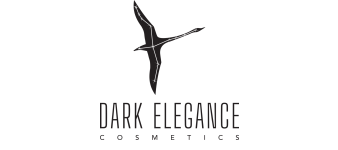
Why is retinol making a comeback?

Many of you may have used skincare products containing retinol. Although you may know that retinol is beneficial to the skin, you may not know exactly what it does. So, what is retinol? Retinol is just another name for vitamin A. Vitamin A is a fat-soluble vitamin naturally found in foods like liver eggs and dairy, and vegetables.
For years, retinol has hidden “in plain sight” but now it is making a resurgence and is increasingly in demand by consumers. Why? Because much research has been done on retinol and its skin-restoring and maintaining properties. Having been proven to be a remarkably effective molecule, retinol has been referred to as “the miracle skincare ingredient”.
To access the beneficial properties of retinol for the skin, your body must first convert it into the active ingredient retinoic acid. Retinoic acid then generates highly sought-out skin benefits.
One of the benefits of retinoic acid is its support of collagen product. Collagen gives your skin its elasticity and firmness. Aging skin produces less collagen which results in fine lines and wrinkles. Therefore, retinoic acid can not only slow down the appearance of skin aging, but it can also reverse existing wrinkles and lines in the skin.
Retinol can improve the appearance of existing hyperpigmentation by evening out the skin tone. It can also prevent hyperpigmentation from occurring.
Retinol can also improve your skin texture by supporting the turnover of skin cells. Skin aging comes with a reduced rate of skin cell turnover. This can result in a dull and uneven complexion. The cell turnover that retinol promotes can also improve the appearance of blemishes.
So how should you apply retinol to ensure you get all its skin nurturing properties? First, it is recommended that it be used at night on a clean face. After washing your face, you should apply a thin layer of retinol to the skin (make sure you stay clear of the eyes, mouth, and nose). A moisturiser can be applied afterwards. And most importantly, even if you only use retinol at night, it is critical to use SPF during the day as retinol causes increased skin sensitivity to the sun.

Those who are new to retinol should start gradually. Start by applying it once per week to allow the skin to adapt. This is particularly important for those who have sensitive skin. Regardless, it is common for retinol to initially cause skin irritation. This irritation may be slight or quite severe. This skin irritation often manifests as redness, drying, sensitivity, and skin flaking. The higher the amount of retinol used, the more severe the irritation. If the irritation becomes too much to bear, you can try switching to a product with a lower concentration of retinol or stop using it altogether. However, for most people, the temporary discomfort retinol brings as the skin adjusts is bearable and the benefits are worth it.
Retinol can also be used in rotation. In fact, research has shown that having a rotational regime, instead of applying retinol in the same pattern without a break, can make retinol even more effective. This increased efficacy resulting from application rotation is thought to be a consequence of mitigating the plateau effect which can happen once the skin fully adapts.
So how long does it take for retinol to be fully effective? As you might expect, this varies from person to person. The amount of retinol in non-prescription products can range from 0.01% to 2%. Benefits from using a product with retinol in this concentration range can be anything from gradual improvement in skin health over time to very noticeable and quick improvement within a few weeks. Some products with the highest concentration of retinol claim changes can take place even quicker.
So, in conclusion, including retinol in your skin routine can be beneficial to the skin for both those who are younger and older in age.





